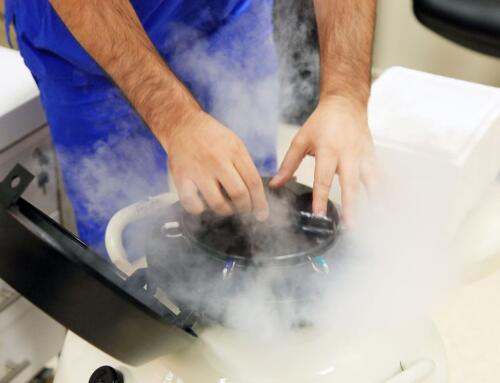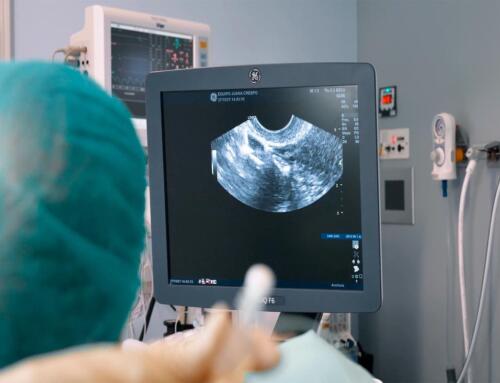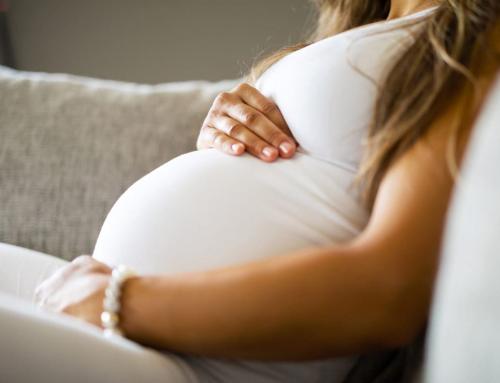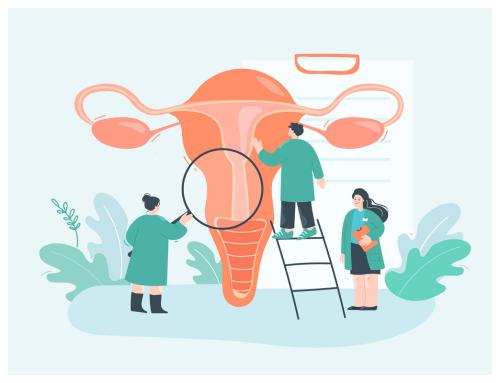Many women wonder what it feels like when an egg is fertilized and whether this event can be accompanied by clear symptoms they can identify.
The truth is that the moment of fertilization itself does not have obvious physical symptoms. In fact, it often goes unnoticed in most cases.
It’s important to note that once the egg is released from the ovary, it remains in the fallopian tube for about 12 to 24 hours. After that time, if it’s not fertilized, the endometrium sheds, leading to a new menstrual period and the start of a new menstrual cycle.
On the other hand, the lifespan of a sperm is between one and three days (24-72 hours). This means fertilization can occur from the time of ovulation up to three days after having sexual intercourse.
However, even though we don’t talk about “symptoms of a fertilized egg,” in the early days of pregnancy, a woman may experience some changes and discomfort.
The most important of these is implantation bleeding.
Implantation Bleeding as a Pregnancy “Symptom”
Embryo implantation is the process by which the fertilized egg attaches to the uterine wall (endometrium) to continue developing.
Implantation typically occurs between the seventh and eighth day of embryonic development (7-8 days after fertilization) and can last several days.
During this process, the embryo “invades” the endometrium and breaks its blood vessels to adhere to it.
The goal is to form new blood vessels that allow for the exchange of nutrients with the mother’s blood through the placenta and umbilical cord.
The rupture of the small blood vessels in the endometrium causes a small bleeding episode, known as “implantation bleeding,” which could be considered one of the first pregnancy symptoms.
This bleeding usually has a light texture and is pink or reddish in color, but it’s less intense than menstrual blood. It’s often brief, although some women may experience light and intermittent spotting for several days.
In a 28-day menstrual cycle, implantation bleeding typically occurs 7 to 10 days after ovulation and fertilization (around days 21 to 24 of the cycle), which can sometimes be mistaken for a regular period.
Therefore, women with very regular and controlled menstrual cycles and those actively trying to conceive are usually better at identifying it.
However, not all pregnant women experience this type of bleeding.
Early Days of Pregnancy and Symptoms of a Fertilized Egg
Throughout pregnancy, a woman undergoes many changes, both physical and emotional.
- One of the earliest signs is a sensation of abdominal bloating, which is associated with hormonal changes and can be exacerbated by fluid retention and constipation.
- At the beginning of pregnancy, dizziness, nausea (with or without vomiting), and aversion to certain tastes or smells are also common, although this varies from woman to woman.
- Another symptom that may occur after fertilization is an increased urge to urinate. This can start as early as the first 15 days of pregnancy, due to the hormone gonadotropin, which increases blood flow to the area and leads to increased urination.
- Shortly after fertilization, a woman may also notice changes in her breasts, including swelling, slight nipple enlargement, increased sensitivity, and heightened tension in the breast area.
- During the first few weeks of pregnancy, it’s normal for a woman to feel more fatigued. In fact, fatigue and drowsiness are considered one of the main symptoms of the first trimester due to the rapid increase in progesterone levels.
- In these early days, a woman may also experience mood swings, feelings of irritability or sadness, headaches, uterine cramps, constipation, or mild nasal congestion.
How to Know if You’re Pregnant
The only way to confirm pregnancy is by taking a pregnancy test, a blood test, or a transvaginal ultrasound. The latter is usually not performed until the 7th week, when the embryo’s heartbeat can be seen for the first time.
Regarding the other two tests:
Urine Pregnancy Test
Pregnancy tests detect the presence of the hormone hCG (human chorionic gonadotropin) in urine. This hormone is produced by the placental cells that surround and nourish the embryo (trophoblast) starting around the 6th day after fertilization, but it may not be detectable in urine until day 14. Some urine tests specifically analyze the antibodies of the beta subunit of hCG, which reduces the chances of errors or cross-reactions in the test. In general, urine pregnancy tests are simple, reliable, and quite affordable. Some are less sensitive (detecting hCG from 20 mIU/mL), while others can detect the hormone at very low levels (5 mIU/mL).
Blood Test
The most reliable way to determine pregnancy is through a blood test to measure the beta subunit of hCG. This is the standard option in assisted reproductive treatments because it indicates whether everything is progressing well, even in cases of multiple pregnancies. To ensure reliable results, you should wait 14 days from fertilization (or the equivalent day for frozen embryos) before having the blood test.
If you’re considering assisted reproductive treatment or have questions about the process, feel free to reach out to us. We’ll be happy to address all your concerns!
















